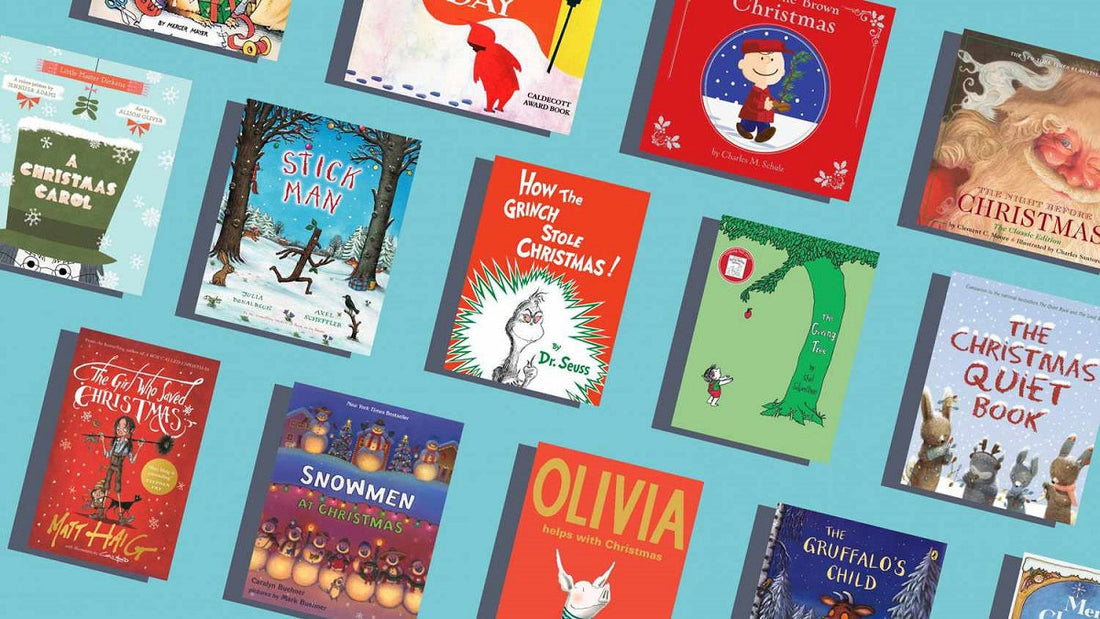
The Role of Picture Books for Children in Sparking Creativity
Share
In the early years of a child’s life, every experience contributes to how they grow, think, and see the world. Among the most valuable tools we can offer them during this crucial stage are picture books for children. These books are more than just collections of colourful illustrations and fun characters—they’re windows into language, imagination, empathy, and learning.
Whether it’s a quiet moment before bed or a cosy afternoon on the sofa, picture books play a powerful role in a child’s emotional, social, and cognitive development. For parents and carers, investing time in reading with young children isn’t just an enjoyable ritual—it’s an act of nurturing that leaves a lifelong impact.
Building the Foundation for Reading
Before a child can recognise letters or sound out words, they begin developing the skills they’ll need to become confident readers. Picture books introduce them to the rhythm and structure of language. Through rhyme, repetition, and engaging vocabulary, children begin to understand how words work.
Even toddlers benefit from hearing stories read aloud. They start connecting spoken words with the pictures on the page. This strengthens their vocabulary, memory, and comprehension—skills that form the bedrock of early literacy.
Visual Literacy and Interpretation Skills
Children “read” illustrations long before they can read text. This is one of the unique strengths of picture books: they support visual literacy by teaching children to interpret meaning from images.
As they explore the expressions on characters’ faces, notice changes in scenery, or follow a sequence of events in a story, they’re learning to think critically and observe closely. These are essential skills that transfer well into other areas of learning, including science, problem-solving, and emotional awareness.
Encouraging Imagination and Creativity
Picture books often transport children to magical places, introduce them to unusual characters, or explore ideas that stretch the imagination. From fantastical adventures to gentle, everyday tales, these stories help children envision worlds beyond their own experience.
Imaginative play is crucial for a child’s development. It allows them to explore emotions, test out new ideas, and practise creative thinking—all in the safe, guided space of a story.
Teaching Social and Emotional Understanding
So many picture books for children focus on big feelings in small, manageable ways. They might follow a character who’s feeling anxious about school, dealing with a disagreement with a friend, or learning how to say sorry.
Through these stories, children learn about empathy, kindness, fairness, and how to handle emotions. They see that it’s okay to feel sad, angry, nervous, or excited—and more importantly, they learn language to express those feelings. This emotional vocabulary is vital as children begin to navigate relationships and situations in the real world.
Creating Bonding Moments Between Parent and Child
Reading picture books together is more than just an activity—it’s a chance to slow down, connect, and enjoy each other’s company. Whether you’re reading a funny rhyming story that gets your child giggling or a gentle tale that soothes them before bed, these shared moments create strong emotional bonds.
Studies show that children who are read to regularly by a parent or caregiver are more likely to enjoy reading later in life. But even beyond academic benefits, the closeness and attention children receive during story time supports their emotional wellbeing and helps them feel loved and secure.
Supporting Listening and Language Development
When you read to your child, they’re not just absorbing the story—they’re hearing how language flows. They learn how sentences are structured, where pauses happen, how questions sound, and what it means when a voice gets louder or softer.
Picture books for children often include rhythmic, expressive text that draws them in and keeps them engaged. This strengthens their listening skills, which are vital in school settings where instructions and conversations form a big part of daily learning.
Books That Grow With Your Child
One of the joys of picture books is their flexibility. A child may return to the same book many times, each time noticing something new. As their understanding deepens, so does their interpretation of the story and its illustrations.
For example, a toddler might simply enjoy the repetition in a story like Brown Bear, Brown Bear, What Do You See?, while a four-year-old might start recognising patterns and sequencing. Picture books support learning at every stage of early development, adapting to your child’s needs as they grow.
Choosing the Right Picture Books for Children
There’s an abundance of beautiful, thoughtful, and entertaining picture books available today. Here are a few things to consider when selecting picture books for children:
-
Age-appropriateness: Choose books that match your child’s developmental stage, with suitable vocabulary and themes.
-
Representation and diversity: Books that include a range of characters and cultures can help children develop a broader worldview.
-
Illustration quality: Vivid, detailed illustrations spark interest and enhance comprehension.
-
Engagement factor: Books with rhyme, repetition, humour, or interactive elements are particularly engaging for young readers.
-
Re-readability: A great picture book stands up to being read again and again, with details and layers that grow more meaningful over time.
The Lasting Power of Picture Books
In a world where screens compete for attention and life can feel increasingly rushed, picture books for children offer a unique opportunity to slow down and be present. These small, powerful books introduce children to language, help them understand the world, and give families a way to connect through stories.
They might seem simple on the surface, but picture books hold a quiet magic. They help children build confidence, explore emotions, and feel seen and understood. Whether you’re a new parent starting a home library or a grandparent sharing a favourite story, investing in picture books is one of the most meaningful things you can do for a child’s development.
So next time you turn a page with your little one, know that you’re doing more than reading—you’re planting seeds that will grow for years to come.